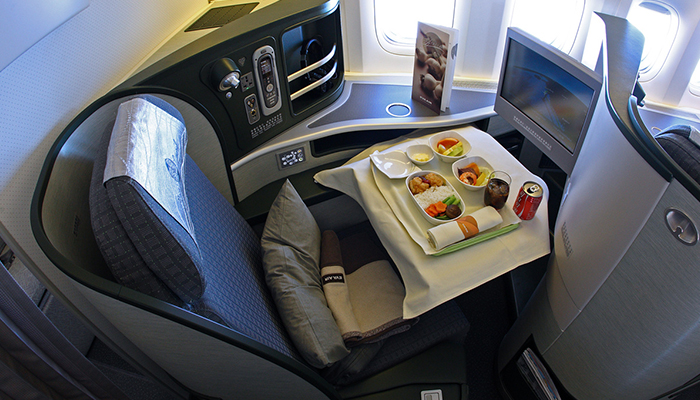Here are the Aviation Trends for 2019 that you need to look

In the past 3 years, the Indian aviation has emerged as the growing sector across the world. The year 2018 had a lot of highs & lows for the industry but 2019 promises to be the exciting year for the industry. In this year, we are about to witness revised regulatory frameworks along with the addition of disrupting & cutting-edge initiatives like biometric self-boarding or in-flight connectivity.
However, refundme.in – a cancelled flight & denied boarding compensation provider thinks that fluctuating fuel prices & the yield to the aircraft owners could be a devastating situation for airlines & aviation altogether if not treated timely via a proper set of policies & rules.
Here in the following post, we have put together a few trends that could add to the growth & profitability of the civil aviation sector in years to come:
1. Welcome in-flight connectivity

Travellers now don’t have to put their mobile phones on airplane mode as Telephone Commission has approved the proposal of in-flight connectivity made by Department of Telecommunication.
-
The initiative is a great way to invite the passengers who are required/want to attend the phone right above the cruising altitudes.
-
This initiative will invite more passengers to make their journey via air travel.
2. Biometrics for easy check-in
To automate & speed up the check-in progress various airports are deploying their investment in biometrics system. We will see greater use of facial recognition at the entrances of the airport, check-in points, immigration desk, bag-drop points & at the security level of airports.
-
The biometrics will be supported by Digi Yatra scheme. The scheme was made to promote the paperless travel and identity check at multiple points of the airport.
-
This way, passengers won’t have to keep boarding pass handy & would move through the airport easily.
3. Improved Regulatory Frameworks

-
The revised aviation regulation is dedicated towards the improvement & the growth of the airport’s infrastructure, especially in the Tier II & Tier III cities.
-
There is a proposed model of development of the six regional airports, an investment plan for Jewar airport and schemes like UDAN which will allow more footfall of the air passengers in this year.
-
Inclusion of more such schemes along with urban transport corridors (a linear area that has access to modes of transport) should be provided for smooth connectivity of public to the transports.
4. Acquisition of cutting-edge technology

The travel & transport industry under the aviation sector will put cutting-edge technologies like AI, robotics, data analytics and machine learning to business use. These digital trends will help in meeting the predictive behaviour of air passengers.
-
It was Seoul’s Incheon International Airport that partnered with LG electronics company for testing its two robots for airport assistance in 2017.
-
Out of two, one robot was functioning as an airport guide to help people find directions & get smooth transiting while another robot was found cleaning up the mess & spills around the airport.
This is just one, there are many airports that are planning to embed the automated robots inside the airport premise to help passengers with smooth transiting around the airport. This year, we may expect to see that.
5. Low-cost carrier flights to take long haul routes

This year, we are going to see the rising number of low-cost carrier (LCC’s). Earlier these carriers were operating with shorter routes, why? To save cost & time. These flights generally use to come back to their runway by evening.
But this year, we will see LCC’s to be operating with long routes as they planning to spread their hub across the world. With these long haul flights, the public will start more use of air transports.
6. Rise of premium class seats over business class

This year, premium class bookings will be on demand. Many airlines are aggressively focusing on selling their premium & business class seats. There are airlines like Iberia & American airlines that debuted with its premium economy cabin in April 2017.
Many premium economy seats are offering the same comfort & features as business class like good support for laptop connectivity to promote inflight working for professionals & working class.
7. Automated security options for checked-luggage

-
New baggage protocols are on its way that will allow great visibility & control of the baggage to the passengers.
-
Generally, baggage goes through the 4 stages, one when passenger hands over the bag to the airline, second when it loads in the aircraft, third when the baggage is delivered to the transfer area & fourth when from transfer area it returns to the passenger. Each stage needs proper technology that can track & monitor the bags to avoid the baggage loss – which stands the biggest problem during the air travel.
-
Airlines will start to invest in RFID (Radio Frequency Identification) technology that will bypass the need to have paper tags.
-
With RFID, people will have easy monitor & control of their luggage in real time that too on their smart devices – this will subside the long queuing at the airport for baggage loss claims.
So, these are the few trends that we are likely to see in the aviation sector. The day is not far when airlines will operate on full potential & achieve the title of world’s largest aviation sector.
About us!
refundme.in is India’s premier air travel compensation providing company. Dealing in cases of cancelled flight & denied boarding to help passengers get their refund value plus compensation sum. Functioning in three easy steps to help passengers get their sum directly to the bank account.
If you want to grab more information about airports & airlines, don’t forget to download Mr. Boie app right from the Google play store & Apple app store.